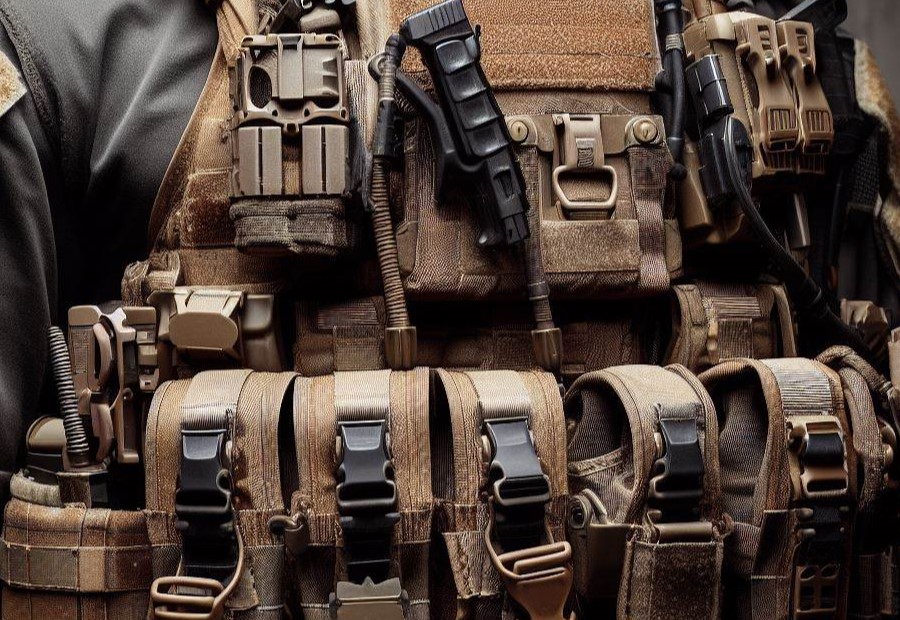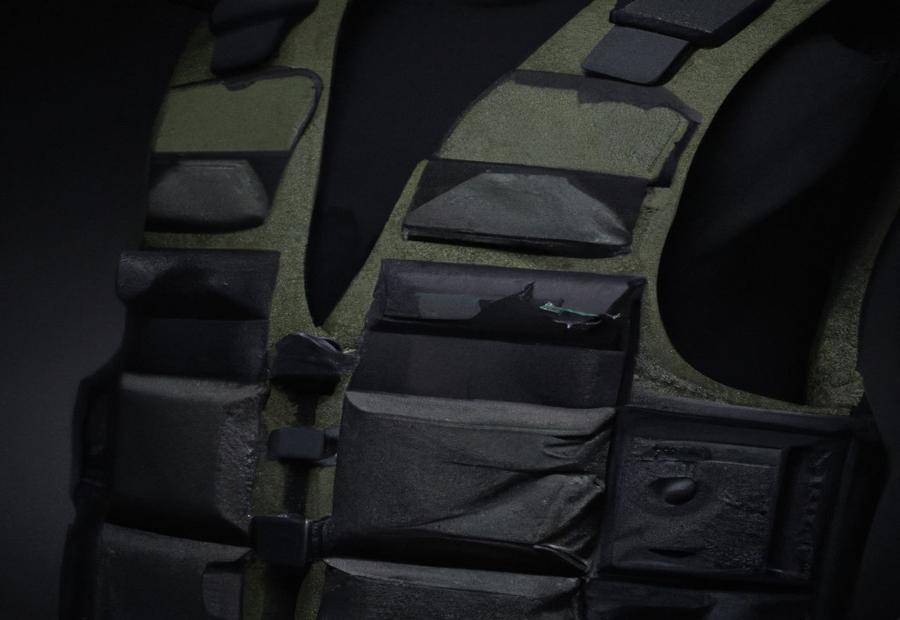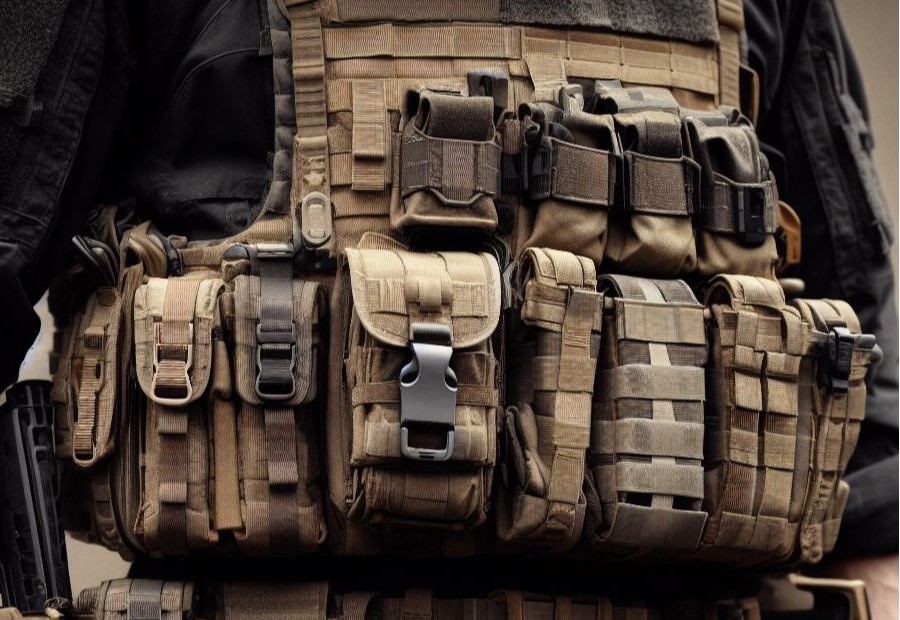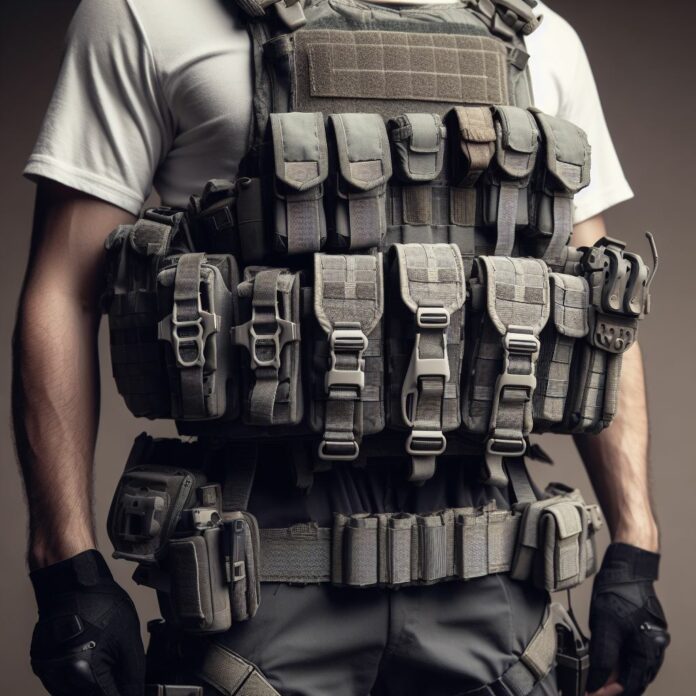Tactical vests are essential gear worn by military personnel, law enforcement officers, and security professionals to carry equipment, provide utility, and offer protection in high-risk situations. In popular culture, there is often a misconception that tactical vests are inherently bulletproof.
However, the reality is that not all tactical vests are bulletproof. Bulletproof vests, also known as ballistic vests, are specifically designed to provide protection against bullets and other ballistic threats. Tactical vests, on the other hand, primarily focus on utility and gear carrying capabilities.
There are different types of bulletproof vests available, each offering varying levels of protection. These vests are typically categorized based on the level and type of ballistic rating they can withstand.
While tactical vests may not be bulletproof, they still provide protection against other potential threats. They are designed to offer resistance to abrasions, cuts, and punctures. Tactical vests may also include features like plate carriers that allow for the insertion of ballistic plates to increase protection.
When choosing a tactical vest, there are several factors to consider. The level of protection required, comfort and fit, and the material and design of the vest play a crucial role in ensuring its effectiveness and usability in specific situations.
It is important to note that tactical vests have limitations. They do not provide protection against all types of bullets, especially armor-piercing rounds or high-velocity rifle rounds. There may be areas of the body that can remain vulnerable even when wearing a tactical vest.
In situations where a higher level of ballistic protection is required, alternatives to tactical vests, such as full-body armor suits or specialized bulletproof vests, may be more suitable.
Understanding the distinction between tactical vests and bulletproof vests is crucial to make informed decisions regarding personal protection and gear choices in high-risk environments.
What are Tactical Vests?

Tactical vests are specialized garments that are created to be worn over clothing and offer additional functionality for the wearer. These vests are widely utilized by military personnel, law enforcement officers, and civilians in tactical situations.
They are designed with multiple pockets, pouches, and attachments to conveniently store and carry essential equipment such as firearms, ammunition, communication devices, and medical supplies. Tactical vests are constructed using durable materials like nylon or polyester, ensuring their ability to withstand harsh conditions.
One of the key advantages of tactical vests is their ability to increase storage capacity, allowing users to carry more equipment. They also provide easy access to the stored items, enabling users to quickly retrieve necessary items during critical situations.
Moreover, tactical vests contribute to improved weight distribution, ensuring that the wearer can keep their hands free and maneuver easily. Some tactical vests even have modular designs, allowing users to customize them by adding or removing attachments based on their specific needs.
It is important to note that while tactical vests are not bulletproof, they can offer limited protection against certain threats. Some vests may incorporate ballistic plates or inserts, which can help stop or reduce the impact of projectiles.
However, the level of protection provided by a tactical vest depends on its specific design and the materials used in its construction. It is crucial to understand that no vest can guarantee complete protection against all ballistic threats.
To sum up, tactical vests are versatile and practical garments that enhance the functionality and safety of individuals in tactical situations.
Are Tactical Vests Bulletproof?
When it comes to tactical vests, one question prevails: are they truly bulletproof? Let’s dive into the world of tactical vests, exploring the different types available and shedding light on their level of protection.
Whether it’s soft armor, plate carriers, or ballistic panels, we’ll uncover the facts and figures that will help you understand the capabilities of these essential pieces of gear.
Get ready to separate fact from fiction in the realm of bulletproof vests.
Types of Bulletproof Vests
When exploring the different types of bulletproof vests, it is crucial to consider the level of protection, materials used, and the specific requirements of the wearer. Soft body armor vests are designed to provide defense against handguns, while plate carrier vests offer protection against high-velocity rifle rounds.
For even greater protection, tactical plate vests combine both soft body armor and hard plates to withstand armor-piercing rounds. Concealable vests are intended to be worn discreetly under clothing, while tactical overt vests provide visible protection and come with additional pockets for gear.
It is essential to select a bulletproof vest that matches the intended purpose and offers the necessary level of protection. Factors such as comfort, fit, and mobility should also be taken into consideration. Additionally, proper care and maintenance are vital to ensure the longevity and effectiveness of the vest.
Make sure that the chosen bulletproof vest complies with regulations and standards for its intended use, and always seek professional guidance when making a selection.
What Protection Do Tactical Vests Provide?
Tactical vests provide protection against various threats and enhance the safety of the wearer. They are designed to offer defense in high-risk situations.
These vests are typically made from durable materials such as Kevlar or ballistic nylon that can withstand impact and reduce the risk of injury.
Tactical vests offer protection against bullets, fragments, and other projectiles. They often include ceramic or steel plates that provide additional protection to vital body areas.
Moreover, these vests have multiple pockets and Molle webbing, allowing users to carry essential equipment and accessories.
Tactical vests are suitable for military personnel, law enforcement officers, and individuals operating in dangerous environments.
They offer protection without hindering mobility, allowing users to maneuver effectively in critical situations.
Whether it’s confronting armed threats or conducting high-risk operations, tactical vests are an essential piece of protective gear.
Factors to Consider when Choosing a Tactical Vest

When it comes to choosing a tactical vest, there are several important factors to consider. In this section, we will dive into these key aspects to help you make an informed decision.
From the level of protection to the comfort and fit, as well as the material and design, we will explore what each sub-section has to offer.
So, grab a seat and let’s dive into the world of tactical vests!
Level of Protection
| Level of Protection | Description |
| Level I | Provides the lowest level of protection against handguns, with the ability to stop bullets from small calibers, such as .22 LR. |
| Level IIA | Offers protection against low-velocity 9mm and .40 S&W ammunition, commonly used in handguns. |
| Level II | Provides enhanced protection against 9mm and .357 Magnum ammunition, suitable for law enforcement officers. |
| Level IIIA | Offers protection against most handgun ammunition, including .44 Magnum and 9mm submachine gun rounds. |
| Level III | Provides protection against rifle ammunition, such as 7.62mm NATO and .308 Winchester. |
| Level IV | Offers the highest level of protection, capable of stopping armor-piercing rifle rounds, such as .30-06 M2AP. |
Comfort and Fit
When considering the comfort and fit of a tactical vest, there are several factors to take into account:
- Size: Ensure that the vest is the correct size for your body, as an ill-fitting vest can be uncomfortable and restrict movement.
- Adjustability: Look for vests that offer adjustable straps and closures, allowing you to customize the fit to your body shape and preferences.
- Weight: Consider the weight of the vest, as a heavy vest can become burdensome and cause discomfort, especially during extended wear.
- Mobility: Evaluate how the vest’s design and placement of pockets and attachments affect your range of motion. Ensure that the vest allows for sufficient movement without hindering your flexibility.
- Breathability: Look for vests made from breathable materials that promote airflow, preventing excessive sweating and discomfort during use.
- Padding: Check for padded areas on the vest, especially around the shoulders and back, as they can provide additional comfort, reduce strain, and distribute weight more evenly.
- Load distribution: Consider how the vest spreads the weight of equipment or attachments. Ideally, the vest should evenly distribute the load to prevent strain on specific areas of the body.
By considering these aspects of comfort and fit, you can choose a tactical vest that provides optimal comfort and allows you to perform your tasks effectively.
Material and Design
Material and design are crucial factors that greatly impact the effectiveness of tactical vests. Tactical vests are typically constructed using high-quality materials like ballistic nylon, Kevlar, or ceramic plates. These materials ensure durability and resistance against punctures and abrasions, providing long-lasting protection.
Additionally, the design of the vest is optimized for functionality and mobility. It incorporates adjustable straps, Velcro closures, and MOLLE systems to attach extra accessories. Key body areas such as the chest, back, and sides are adequately covered to safeguard against potential threats.
The selection of materials also takes into account weight considerations, allowing for increased comfort and maneuverability. Moreover, the vest’s design includes multiple pockets and compartments to accommodate essential gear and equipment. When choosing a tactical vest, it is crucial to consider both the material and design.
Evaluate the material for its durability and protective properties, while also assessing the design for functionality and comfort. Look for features like adjustable straps and ample storage space that align with your specific needs.
By carefully considering both these aspects, you can ensure that your tactical vest provides optimal protection and functionality in operational or tactical situations. Always remember that the right material and design make a significant difference in the overall effectiveness of the vest.
Limitations of Tactical Vests

Tactical vests may provide essential protection, but they have their limitations. Let’s dig into these limitations, exploring the types of bullets that these vests may not safeguard against, as well as the areas of the body that could remain vulnerable.
It’s crucial to understand these shortcomings to make informed decisions about personal safety gear. So, let’s uncover the facts and delve into the world of tactical vests’ limitations.
Types of Bullets it Doesn’t Protect Against
The types of bullets that tactical vests do not protect against include:
- Armor-piercing bullets: Tactical vests are not designed to withstand the penetration of armor-piercing bullets, which are specifically designed to penetrate ballistic armor.
- High-velocity rifle rounds: Tactical vests may provide limited protection against rifle rounds, but they are generally not able to stop high-velocity rounds fired from rifles.
- Explosive or incendiary bullets: Tactical vests are not designed to protect against specialized bullets that contain explosive or incendiary components.
- Armor-piercing incendiary bullets: These bullets, which combine the capabilities of armor-piercing and incendiary bullets, can easily penetrate tactical vests.
It is important to note that tactical vests are designed to provide protection against a wide range of threats, including most common handgun rounds and fragmentation from explosive devices. However, they have limitations and cannot provide complete protection against all types of bullets.
During a military operation, a soldier wearing a tactical vest was shot at with an armor-piercing bullet. Although the vest offered significant protection, the armor-piercing bullet was able to penetrate the vest and cause injury.
This incident highlights the importance of understanding the limitations of tactical vests and the need for additional protective measures in certain situations.
Areas of the Body That May Be Vulnerable
- The head and neck: Tactical vests may not offer protection for the head and neck area. It is essential to wear additional protective gear like helmets or neck protectors to safeguard these vulnerable areas.
- The groin: Tactical vests typically do not cover the groin area, making it susceptible to injury. Wearing a separate groin protector can provide added protection in this sensitive region.
- The arms and legs: While tactical vests provide coverage for the chest and back, they may leave the arms and legs exposed. It is crucial to wear additional protective sleeves or pants to shield these areas from potential harm.
- The sides: Tactical vests primarily offer frontal and back protection, but the sides of the body may remain vulnerable. Extra caution should be taken as these areas are more exposed and susceptible to injury.
- The lower back: Although tactical vests provide back protection, the lower back area may still be at risk. Back injuries can be severe, so wearing additional lumbar support or back protectors can help mitigate potential harm.
Alternatives to Tactical Vests
When searching for alternatives to tactical vests, you have several options to choose from:
- Plate carriers: These provide a lighter weight and greater flexibility compared to tactical vests. They can be utilized with ballistic plates for added protection.
- Chest rigs: These harness-style systems offer convenient storage for magazines, equipment, and accessories. Although they provide limited ballistic protection, they are lightweight and facilitate good mobility.
- Bulletproof backpacks: Specifically designed for everyday use, these backpacks incorporate built-in ballistic paneling to safeguard against handgun rounds. They are especially suitable for students or individuals seeking discreet protection.
- Concealed carry clothing: You can find garments like undershirts, vests, and jackets with hidden pockets or compartments for discreetly carrying firearms or other self-defense tools.
- Overt body armor: These specialized protective garments are typically worn by law enforcement or military personnel. They offer a high level of ballistic protection but may be cumbersome and restrict movement.
It is crucial to consider your specific needs, the level of protection required, comfort, and ease of use when selecting an alternative to a tactical vest. Additionally, it is essential to check local laws and regulations concerning the possession and use of body armor.
Frequently Asked Questions

Are tactical vests bulletproof?
Yes, tactical vests can be equipped with bulletproof plates for added protection against ballistic projectiles. While tactical vests alone do not provide ballistic protection, they can be combined with hard armor plates to create a bulletproof solution.
What is the difference between tactical vests and bulletproof vests?
Tactical vests are designed to carry additional equipment and can be comfortably worn by civilian uses, police forces, and special forces units. They do not provide ballistic protection until body armor plates are inserted.
On the other hand, bulletproof vests are specifically designed to protect against ballistic projectiles and typically utilize soft body armor protection like Kevlar. Bulletproof vests are usually lighter and more concealable than tactical vests.
What level of protection do tactical vests offer?
Tactical vests alone do not provide ballistic protection. The level of protection is determined by the body armor plates inserted into the plate carrier pockets of the vest. Level IIIA protection is common for tactical vests, which can stop handgun rounds and some lower-level rifle rounds. Additional hard armor plates can be added for higher levels of protection.
Do tactical vests have options for adding extra equipment?
Yes, tactical vests are designed with PALS Webbing or MOLLE attachments, allowing users to add additional gear such as magazines, radios, and hydration bladders. They usually have multiple pockets and features for gear customization.
Are tactical vests suitable for military use?
Yes, tactical vests are commonly used by military forces. They provide protection from rifle rounds and improvised explosive devices, making them essential gear for military operations.
Tactical vests are often ergonomically designed and have a high load bearing threshold, allowing soldiers to carry extra equipment comfortably and efficiently.

